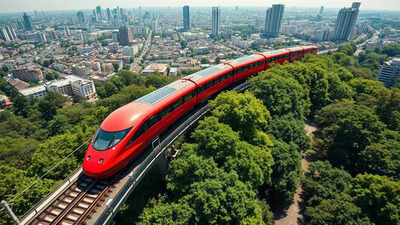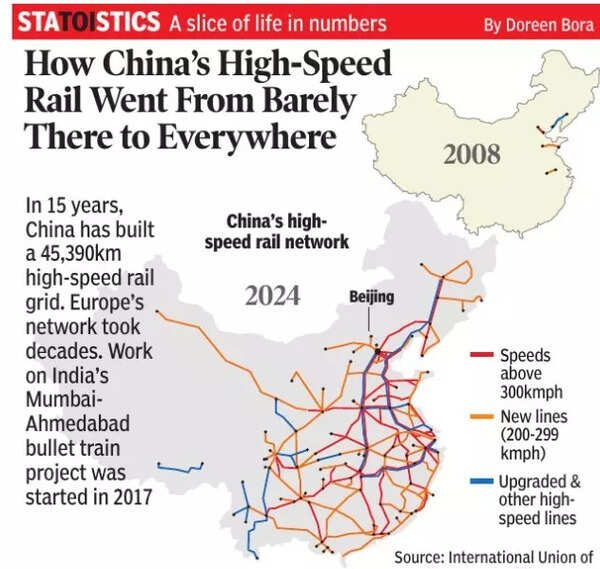
China has created the world’s largest high-speed rail network in just 15 years. China has rapidly built 47,000 kilometers of high-speed tracks, connecting nearly every major city. With trains running above 300 km/h, journeys like Beijing to Shanghai now take just over three hours. Backed by domestic innovation and global expansion, China’s rail network is said to be unmatched in scale and speed.

While Europe’s high-speed rail network took decades to build, India’s first bullet train is still under construction nearly eight years after work began in 2017. As of June 2025, India has completed only 300 kilometers of viaducts along the Mumbai-Ahmedabad corridor, as per reports.The Mumbai-Ahmedabad High-Speed Rail (MAHSR) project, launched in 2017 with Japanese collaboration, aims to cut travel time between two major financial hubs from over seven hours to under three. The first phase, from Sabarmati to Vapi, is expected to begin operations by 2028, with full connectivity to Mumbai projected by 2030.

Pic credit: PIB AhmedabadOut of the 300 km of bullet train viaduct built so far, 257.4 km has been constructed using the Full Span Launching Method (FSLM). The project also boasts 14 river bridges, seven steel bridges, and five prestressed concrete bridges.Indian Railways’ Integral Coach Factory (ICF) is in the process of making India’s first high-speed train in collaboration with BEML. To build the FSLM and SBS sections, 6,455 and 925 spans of 40 meters each were used, respectively. Track-laying has also begun, with about 157 km of reinforced concrete (RC) track bed completed in Gujarat.These train sets with domestic design and production, capable of reaching test speeds of 280 kmph, will set a new milestone in India’s advancement towards high-speed rail transport.The coaches will be equipped with complete air-conditioning and Chair Car setup, incorporating contemporary passenger facilities including adjustable rotating seats, dedicated spaces for travelers with limited mobility, and entertainment systems throughout the journey, delivering optimal comfort to passengers.The project is also environmentally focused, with over 300,000 noise barriers and zero direct emissions expected. While civil works are nearly done at six of the eight stations in Gujarat, progress near Mumbai, particularly the Bandra Kurla Complex underground terminus, lags behind.With the first passenger service targeted by 2028 and full-scale operations by 2030, India’s bullet train is no longer a distant dream, but it still has a long track to cover.














